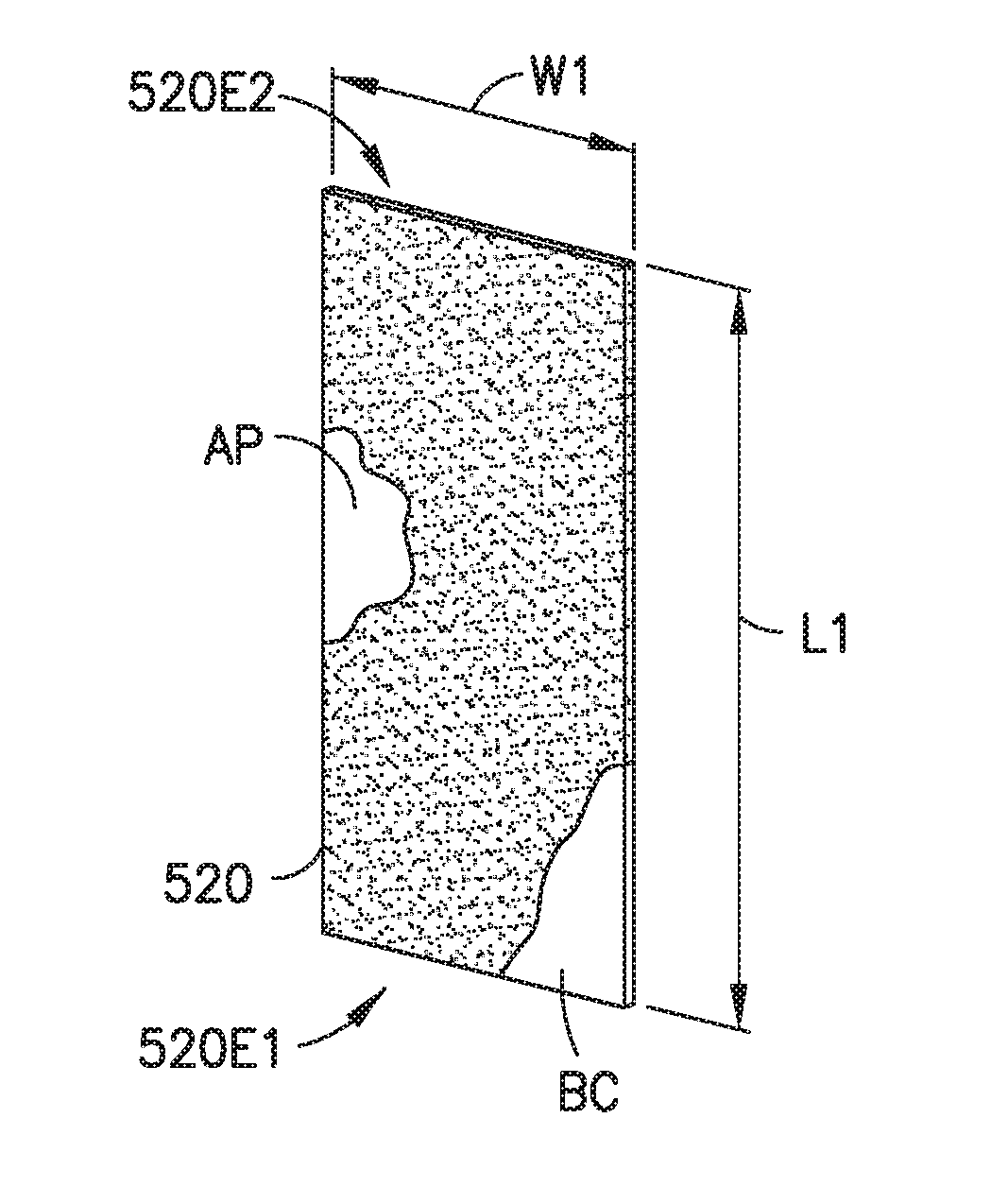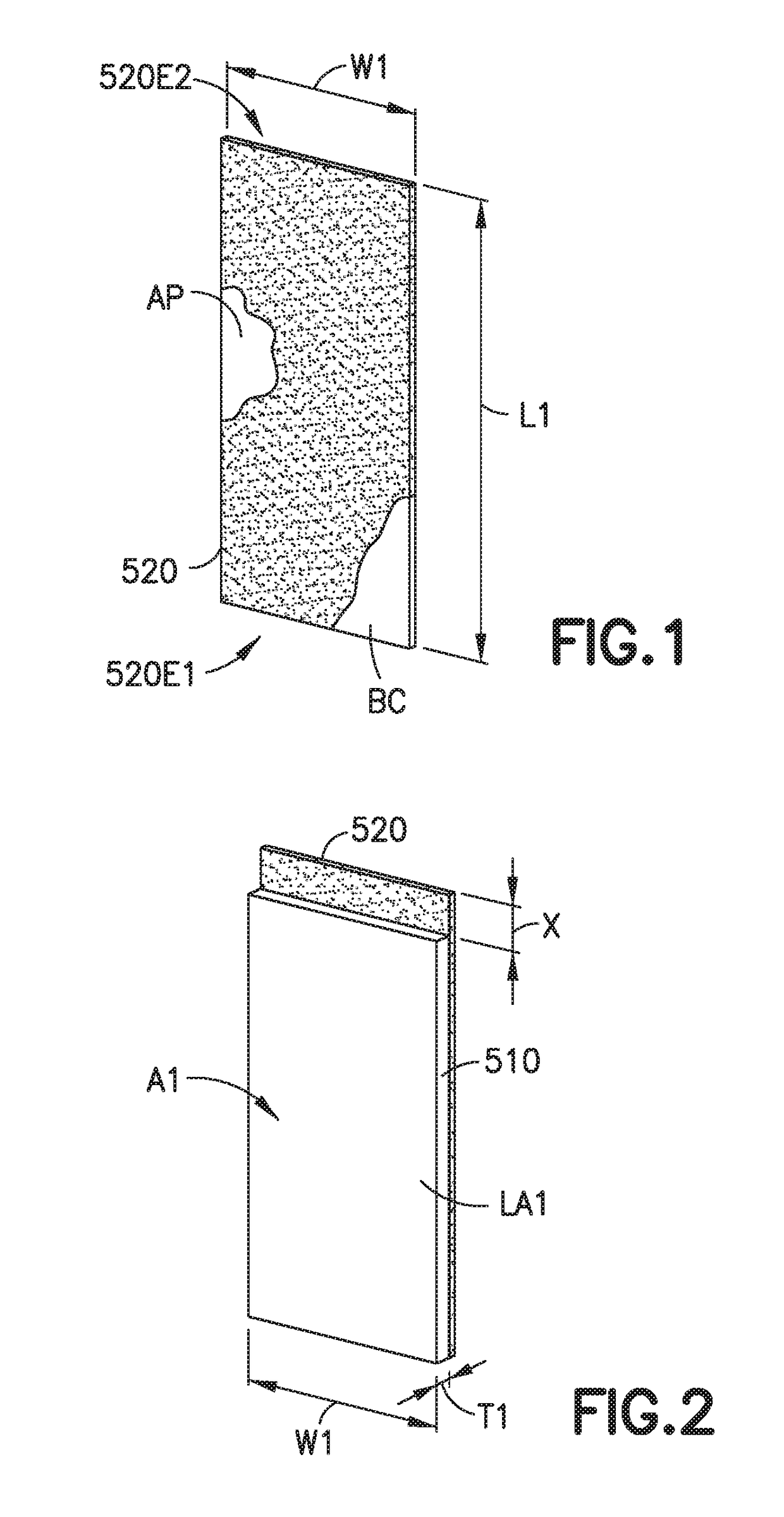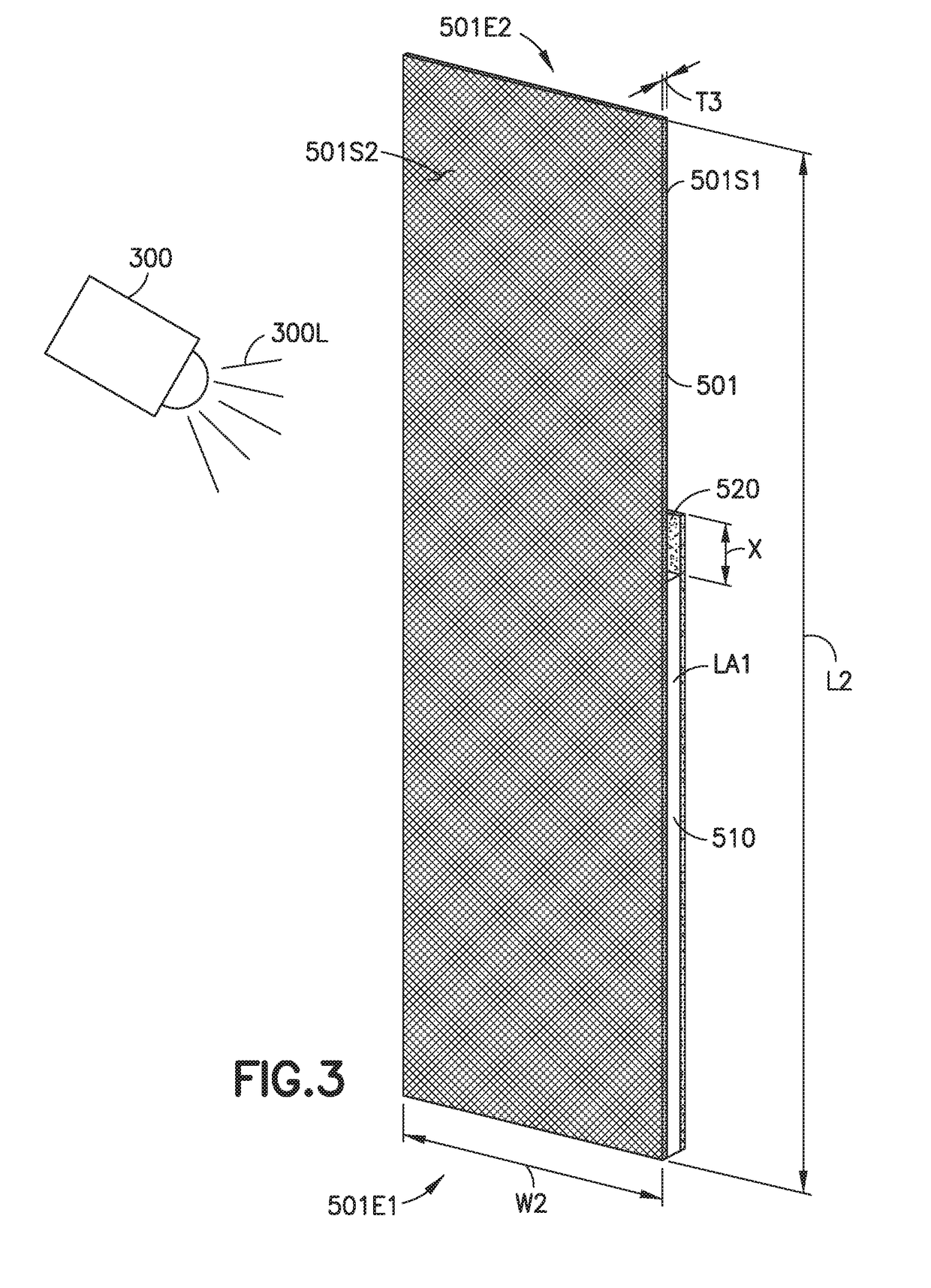Peel adhesion test specimens and method for their preparation
- Summary
- Abstract
- Description
- Claims
- Application Information
AI Technical Summary
Benefits of technology
Problems solved by technology
Method used
Image
Examples
Embodiment Construction
[0020]Referring to FIGS. 5A and 5B the aspects of the present disclosure provide for specimens 500A, 500B for peel-adhesion testing of light-curable materials 510, such as light-curable adhesives and sealants. The specimens 500A, 500B include a substantially transparent peel media 501 that allow light to pass through the substantially transparent peel media 501 so that the light-curable material 510 of the assembled specimen 500A, 500B can be cured. The specimens 500A, 500B described herein provide for testing the light-curable materials 510 using conventional test equipment and procedures.
[0021]Referring to FIGS. 1-5B and 8 the specimens 500A, 500B include a substrate coupon 520, at least one layer (e.g. first layer LA1 and second layer LA2) of light-curable material 510 and a substantially transparent peel media 501. The substrate coupon provided (FIG. 8, Block 800) has a longitudinal length L1 and a lateral width W1 that are suitable for testing the specimen 500A, 500B in a mecha...
PUM
 Login to view more
Login to view more Abstract
Description
Claims
Application Information
 Login to view more
Login to view more - R&D Engineer
- R&D Manager
- IP Professional
- Industry Leading Data Capabilities
- Powerful AI technology
- Patent DNA Extraction
Browse by: Latest US Patents, China's latest patents, Technical Efficacy Thesaurus, Application Domain, Technology Topic.
© 2024 PatSnap. All rights reserved.Legal|Privacy policy|Modern Slavery Act Transparency Statement|Sitemap



